Majiayao, Gansu Province, China_May 2019
Since 2010 Saskia Pfaeltzer (visual artist) works two months a year in China. Meanwhile known in the ceramic world, she shifts her terrain to vocal performance. Since a few years she is invited to Chinese residencies. This time: Majiayao, Gansu, Northwest China.

Together with thirteen artists of different nationalities I am invited by Jackson Li, (Jingdezhen, Sanbao, Jiangxi province China) and Simone Haak (Galerie Terra-Delft, Delft, The Netherlands) to come and work for five weeks in a residence built eight years ago. Five thousand years ago the Majiayao culture flourished here, in the valley of the Yangtze River, with its abstractly decorated pots, made without a potter's wheel. We will draw attention to this residence through our work and the films that are made. With our ceramics, we hope to build a bridge between then and now on this high clay plateau. The Lintao Museum will make a permanent exhibition of this.
We will draw attention to this residency with our work and the films we make.
The flight from Beijing to Lanzhou takes three hours. We are the only Westerners at the airport. The reception committee is ready with bunches of roses. Then another two hours by bus to the never used residence. In China this happens more often: empty museums, empty residences. There are no glazes, only local clay. The thirteen ceramists choke on this very simple offer. And we are not allowed to leave the residence without a large escort. We will be filmed continuously. It is not comparable to other residencies where everything is possible in the field of ceramics.
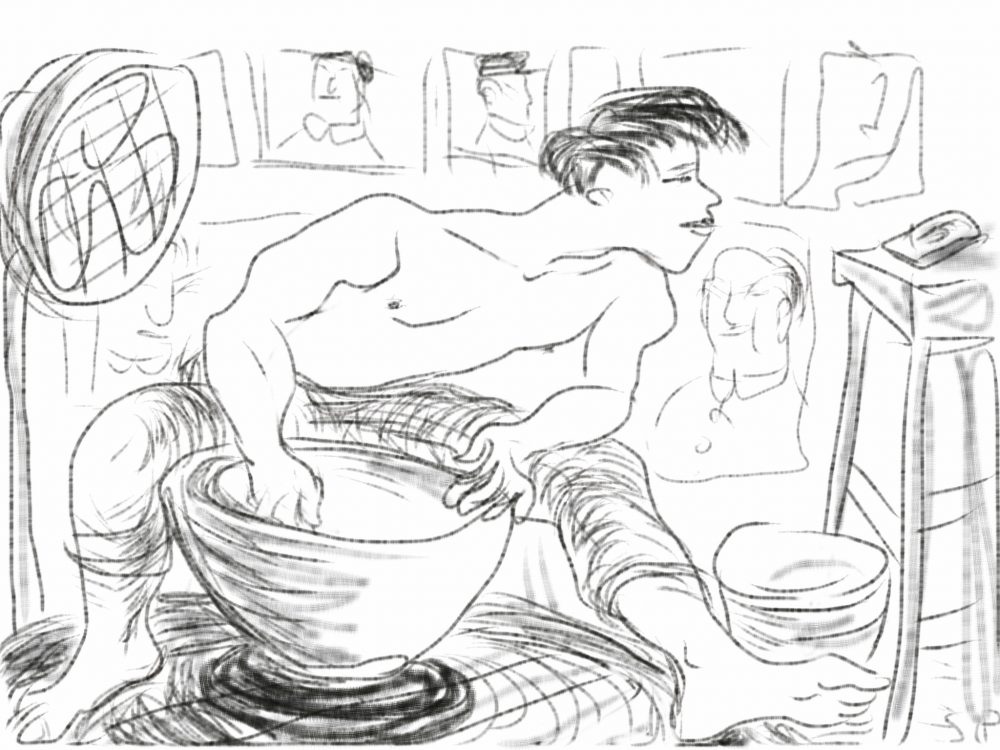 I'll get on it right away. This ancient culture, what was it? And without religion? The high mountains, the seasons and the cycles of life and death must have been worshipped? I make sculptures of primeval goddesses. After three weeks the work has to dry, and we travel by sleeper train to the big Buddhas in the North. Along the Tao river we see mosques with green-shiny ball-roofs like blowflies. On this clay plateau Uigurs, Turks and Tibetans, Buddhists and Muslims live together. I share a sleeping compartment with four men. It's fun: vodka, peanuts and chatting. In the restaurant Tibetan conductresses (blanched faces and wide cheekbones) give a dance show, and then it goes wild; we artists dance singing through the aisle while the Chinese staff ducks behind their cell phones in embarrassment. They seem to be stuck on their seats. Meanwhile the landscape changes from grey apartment buildings to mountainous and the night falls.
I'll get on it right away. This ancient culture, what was it? And without religion? The high mountains, the seasons and the cycles of life and death must have been worshipped? I make sculptures of primeval goddesses. After three weeks the work has to dry, and we travel by sleeper train to the big Buddhas in the North. Along the Tao river we see mosques with green-shiny ball-roofs like blowflies. On this clay plateau Uigurs, Turks and Tibetans, Buddhists and Muslims live together. I share a sleeping compartment with four men. It's fun: vodka, peanuts and chatting. In the restaurant Tibetan conductresses (blanched faces and wide cheekbones) give a dance show, and then it goes wild; we artists dance singing through the aisle while the Chinese staff ducks behind their cell phones in embarrassment. They seem to be stuck on their seats. Meanwhile the landscape changes from grey apartment buildings to mountainous and the night falls.
In the desert a plastic policeman is directing traffic, but there is no traffic anywhere.
Early in the morning the train arrives at Dunhuang in the Gobi Desert. 2000 Years ago, at the beginning of the Great Wall of China, Chinese warriors fought here with the Mongolian enemy. It is the beginning of the Silk Road, where heavily packed camels traveled to foreign cities. The Great Wall of China, made of straw and loam, has been eaten away by sun and wind. China's first empire, the Qin dynasty, lasted only fifty years, because the emperor's son, an incompetent oaf, could not govern the empire.
Totally unexpected we end up in an oasis with vineyards. Once warhorses were bred here. Everything looks rural but prosperous. At lunch we eat donkey meat.
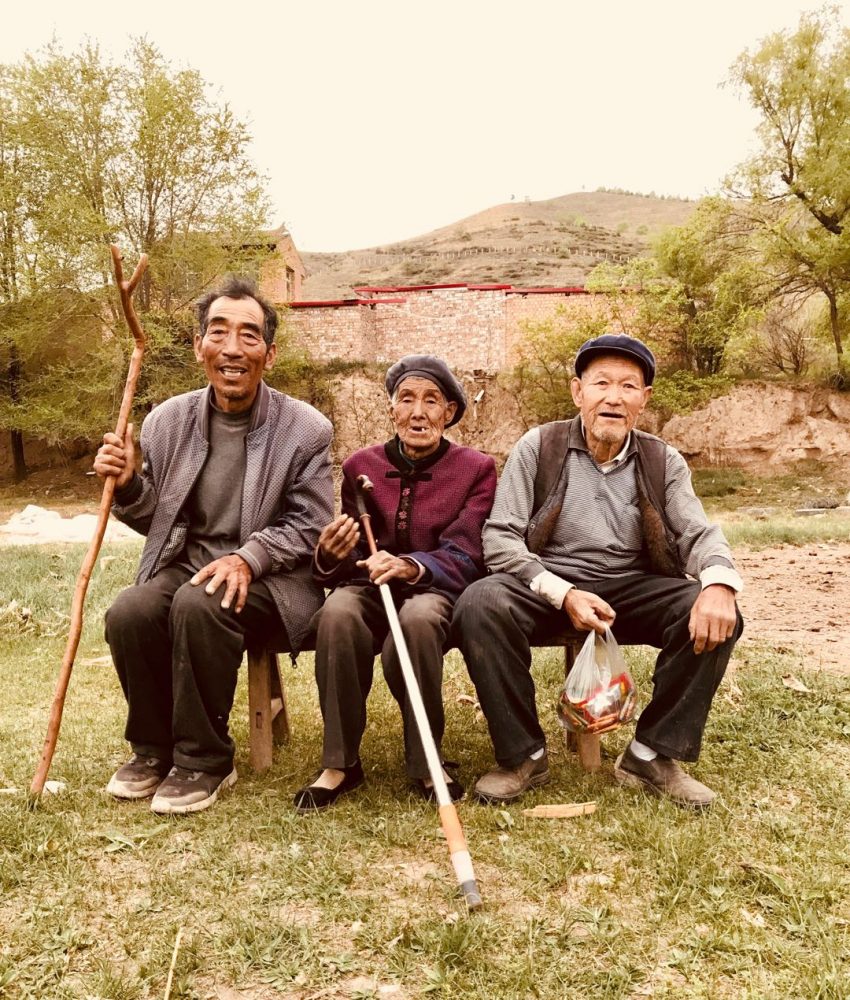
In the desert a plastic policeman is directing the traffic, but there is no traffic anywhere. The bus drives us to the Magao caves ...which President Xi has turned into a tourist resort. Who is playing music? In a plastic dromedary (also garbage can) a music installation is hidden. The sand mountains are great, we climb until we can't climb anymore.
Our girl-guide in a soup dress can hardly pronounce the English: kivs and holes instead of caves and horses. In the caves (800 AD) are small Buddhas made of clay and straw. Westerners discovered them in 1910 and took many of the old manuscripts found there with them to Europe and America.
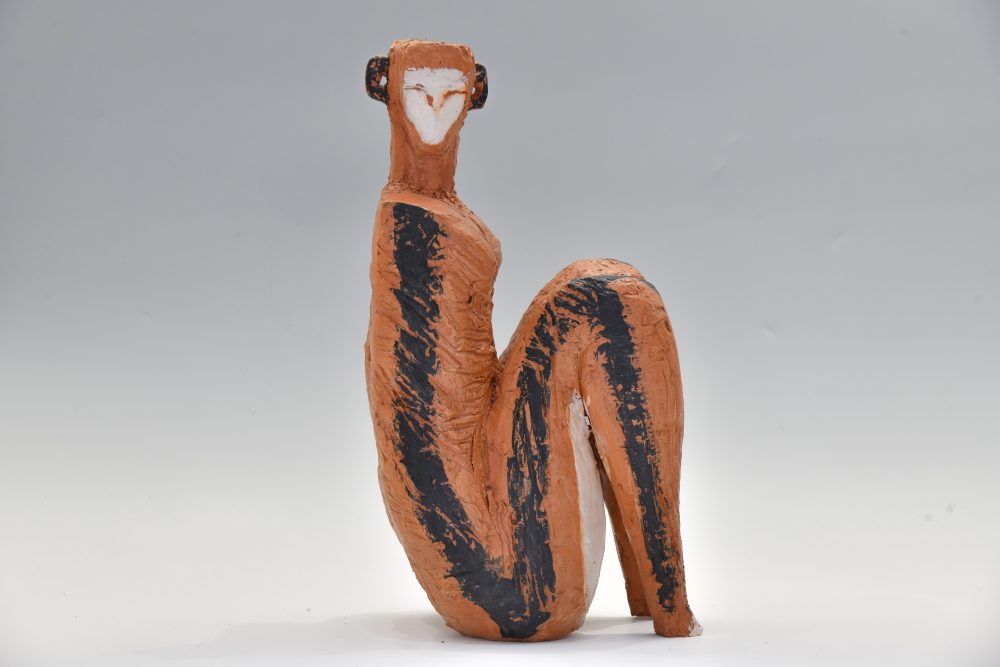
In the landscape of high rocks and deep coves I see one small house with a humanoid being hoeing his garden. Behind it the thirty metre high Buddha carved out of the rock face has been worked very precisely. Old men with leathery cheeks bow deeply, while they mumble their wooden bead necklaces.
In the evening when we get home we hear that the oven with our work has exploded.
Destroy that beautiful statue of mine? I'll make a new one.
The next morning, the mood is sombre. The Chinese organizers walk around somberly. How could this happen? We are the first ceramists in this centre. We are treated like kings and just the óven, the most important thing, is not under control? The overheated work looks like a melted meteorite. All the furnace plates must be thrown away. Three vases made by an important ceramist are also broken. They are quickly copied: this is China. Now it's too much for many Westerners. What do we do here if the kilns don't work? Emotions are running high. Later the management apologizes for what happened. I put western thinking aside. Destroy that beautiful statue of mine? I'll make a new one.
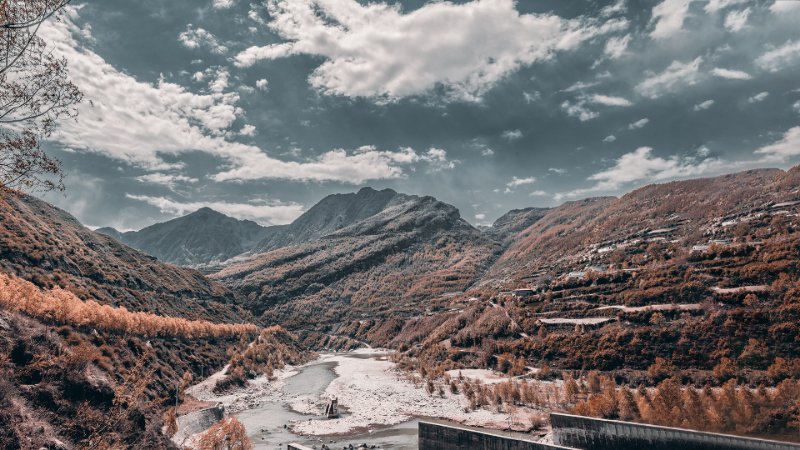
'Little flower', 23, my assistant, is studying at the ceramics academy. I ask what she wants to be. "Critic," she says, so I invite her to critique. "You are not free, what kind of artists are you, you make exactly the same thing here as at home. Where is the connection with here, have you even studied this region? No! Who do you think you are to say you are inspired by the mountains, you have never seen a mountain! Why don't you show your criticism through your 'art'? Are you such good artists that you get to sit here? No way!" She is furious. She forgets that for the first two weeks we weren't allowed outside the walled compound. I've never heard such outspoken anger from a Chinese person before. It makes me think though. What do I think? "What a load of crap with your 'not free', real talk from a 23 year old. Fifty years ago you would have bludgeoned me to death with your opinion. But you do have a point."
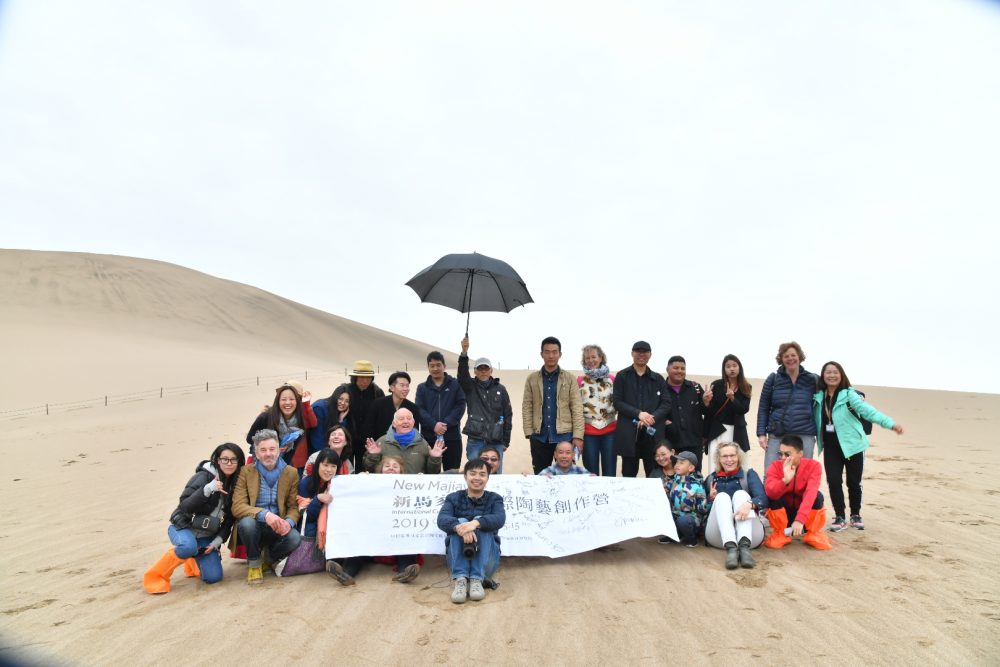
My project The Singing Vase is becoming increasingly important. While at first I wasn't sure if it would go ahead, it is now a cheerful part of the opening program of the museum. My Chinese song is well known to the older generation. But I'm still insecure: there will be a lot of people laughing and imitating me like a turkey. My fabric vase suddenly looks like an Indian tent from the toy shop. Wasn't it in Suske en Wiskewith Aunt Sidonia singing as a vase? Doubt, doubt...
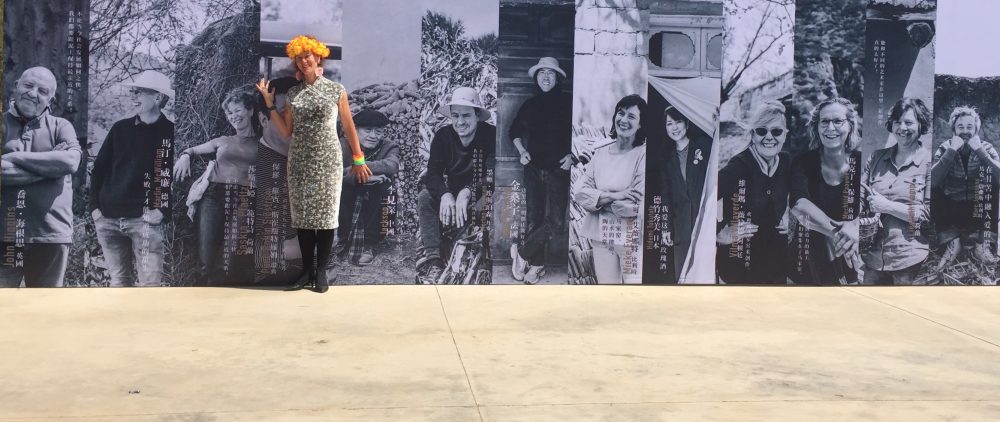
Thirty portable toilet cabins are in the courtyard. Many people are expected for the opening. The Rolling Stones would be jealous of the stage (LED screen of twenty by five metres). The 'Big Potatoes' are sitting on the first rows. My singing performances The sound of Majiayao (making sounds in the old vases) and The Singing Vase are a success.
First there is a Tibetan banquet on the mountain. The bus drives up along narrow roads. Tibetan villagers with mobile phones are waiting. On the mountain meadow a fire is burning. The police pushes the people behind ribbons and everyone watches us eat. Then there is a show. Between the swordsmen and the dancer with seven masks I sing a song. The television is filming and the photographers click. People press their cell phones against my jaw to be photographed with me. You never see a western face here!
But suddenly I can't see a photographer anymore. I can't smile either. I am completely done with it. Still the Majiayao Cultural Festival is great. The whole village (half a million people) has turned out and the tv crew is filming. In the museum we explain to the cameras what we mean with our work. In the evening we sing Pavarotti. The next day from 9 to 12.30 there are again lectures in Chinese. Everyone falls asleep.
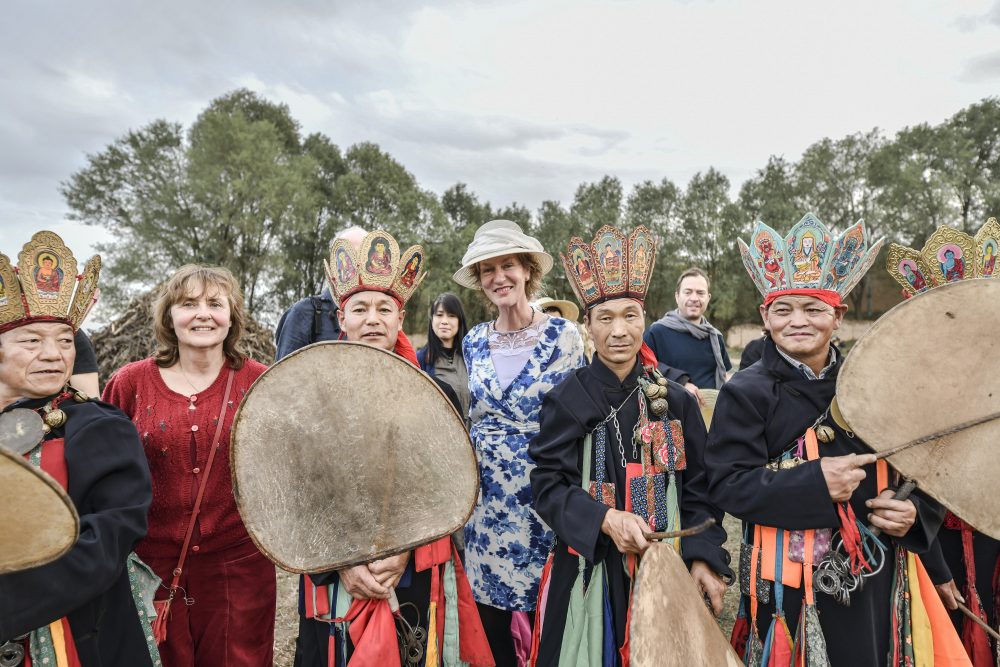
Talking to the assistants afterwards shows the other side of the coin: they almost worked themselves to death. The photographer, 22 years old, captured us at every moment. He missed five classes because of this and risked being expelled; rule is rule. My young co-singer for the singing project was on TV. His mother watched too and was not happy. ("This is not a career!") He is devastated. The bar is high for these young people, they have to perform.
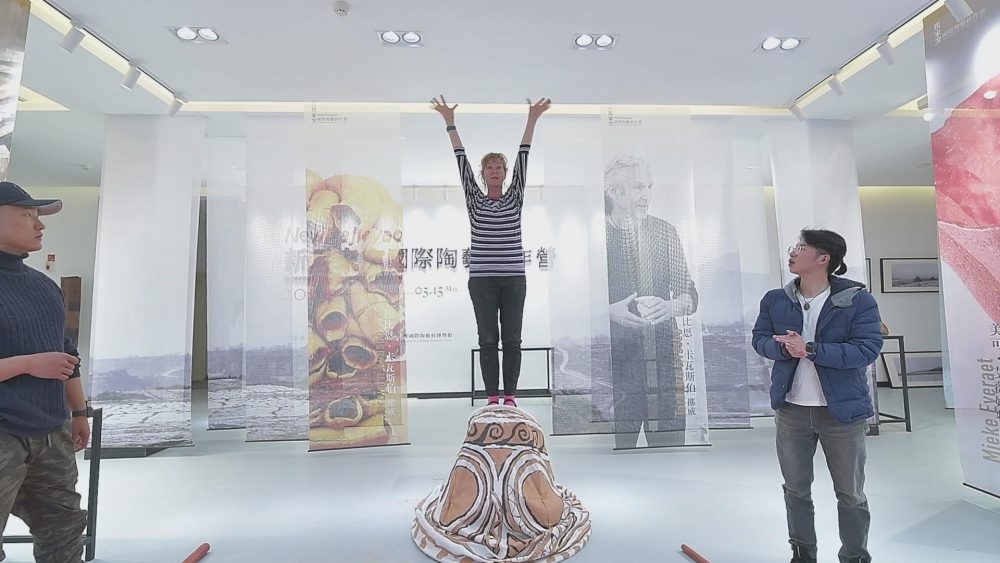
After humiliation by the West (Opium Wars), China, led by the Communist Party, is seeking a path to its rebirth. In 2049, on the 100th anniversary of the People's Republic, it hopes to realize it. While the West promotes individualism, China demonstrates the collectivity of the Middle Kingdom.
Info about the Majiayao residence: www.terra-delft.nl


